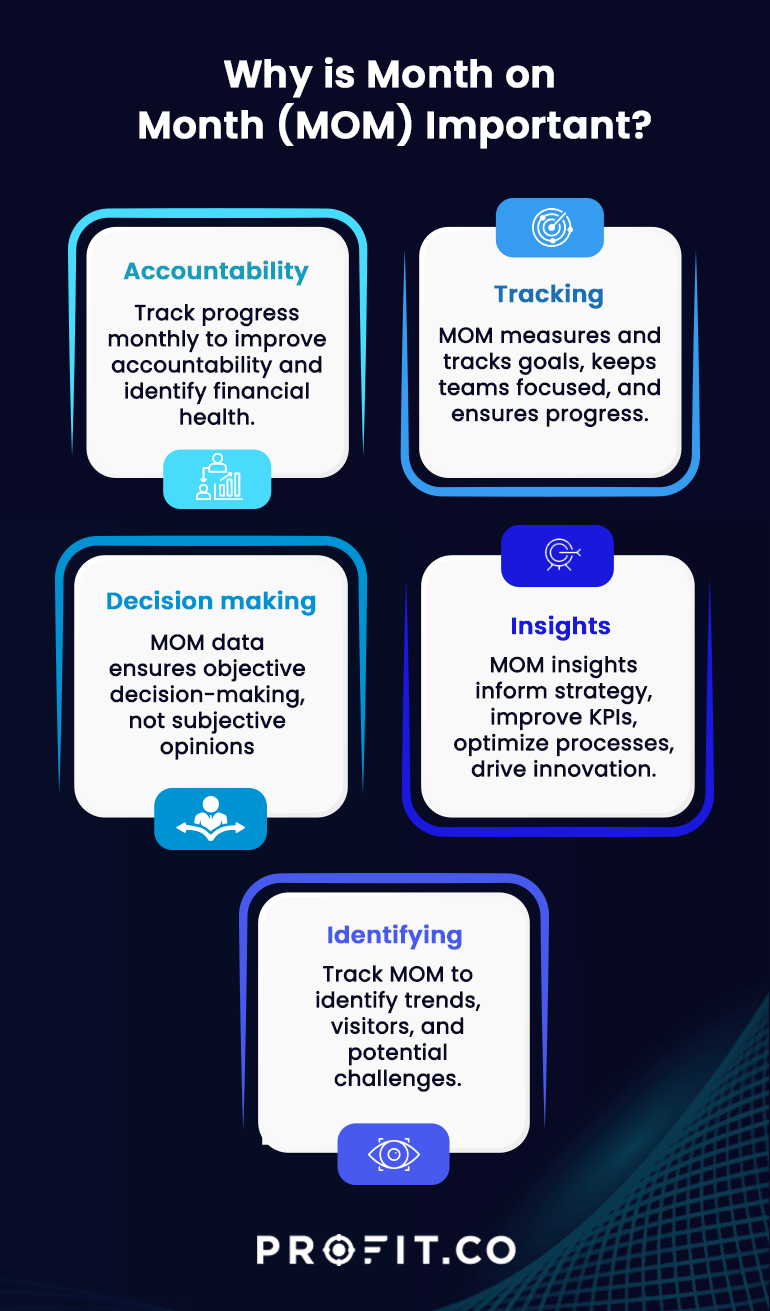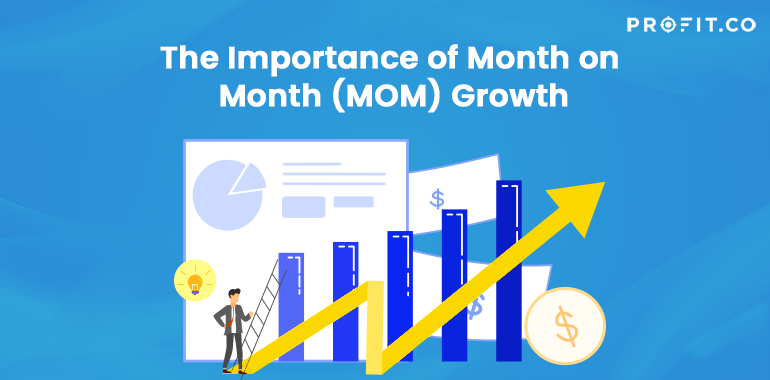Introduction
Metrics are essential tools for measuring, tracking, and analyzing data related to a business or organization. Metrics help to quantify and evaluate performance, identify areas for improvement, and inform decision-making processes.The right metrics can help communicate the data’s significance, inspire action, and foster a shared understanding of the organization’s goals and priorities.
What is Month on Month(MOM) Growth?
Month on month is a term used to compare data or metrics from one month to the next. This type of analysis is commonly used in business and finance to track trends and identify changes over time.
Definition
MOM is a metric used to measure changes in performance over a short period of time
Why is Month on Month (MOM) Important?

Here are some reasons:
Accountability
Measuring performance month on month helps to increase accountability by providing a clear record of progress over time and can help identify the healthy financial state of a company.
Tracking
MOM measurements can track progress toward specific goals or targets and help keep teams focused on achieving critical objectives and ensure progress over time
Decision making
MOM measurements provide a data-driven approach to decision-making, helping to ensure that decisions are based on objective, quantifiable data rather than subjective opinions or assumptions.
Insights
By measuring MOM, businesses can gain actionable insights that can be used to inform changes in strategy or operations and can help to improve brand awareness KPI, optimize processes, and drive innovation.
Identifying
By tracking performance month on month, businesses can identify trends and patterns in their data over time and can help identify new vs. returning visitors and highlight potential challenges.
Learn more about measuring and tracking your goals from profit.co today
How do you Calculate Month on Month Growth (MOM)?
Collect the data for the current month and the previous month. This could be any data type, such as sales figures, website traffic, or customer satisfaction ratings. Subtract the previous month’s data from the current month’s data resulting in the absolute difference between the two months. Divide the absolute difference by the data for the last month. Multiply the result by 100 to get the percentage change from the last month.
Formula
MOM Growth % = Current Month – Previous month/Previous Month * 100
Example calculation
Current Month = $500000
Previous Month= $400000
Difference: $500000 – $400000 = $100000
Percentage Change: ($100000 / $400000) x 100 = 25%
The MOM increase is 25%.
The data type can be sales figures, website traffic, or customer satisfaction ratings.
Practical Application of MOM Metric
Finance
Finance teams may track MOM expenses and revenues to evaluate financial performance, identify areas of improvement, and make data-driven decisions.
Marketing
The marketing team can use the metric to identify website traffic, conversion rates, and social media engagement.
Sales
Mom metric can track sales of the company and can infer that there has been an improvement in its sales performance over the past month based on the data.
Human Resources
Data from this metric can indicate a problem with the company culture or management or may signify employee satisfaction and engagement.
Product and Manufacturing
MOM analysis to identify production trends and track the progress of their manufacturing processes. The product team monitors MOM progress on feature requests, bug fixes, and usage.
FAQs
- What is Month on Month Revenue (MOM)?
Month on month is a term used to compare data or metrics from one month to the next. This type of analysis is commonly used in business and finance to track trends and identify changes over time.
- How is MOM calculated?
MOM Growth % = Current Month – Previous month/Previous Month * 100
Conclusion
Month-over-Month (MoM) is a valuable metric for objectively measuring the pace of growth within a company. It provides a starting point for scaling up to more considerable time intervals, such as Year on Year growth track. MOM metrics give a better understanding of rates of increase over time.
